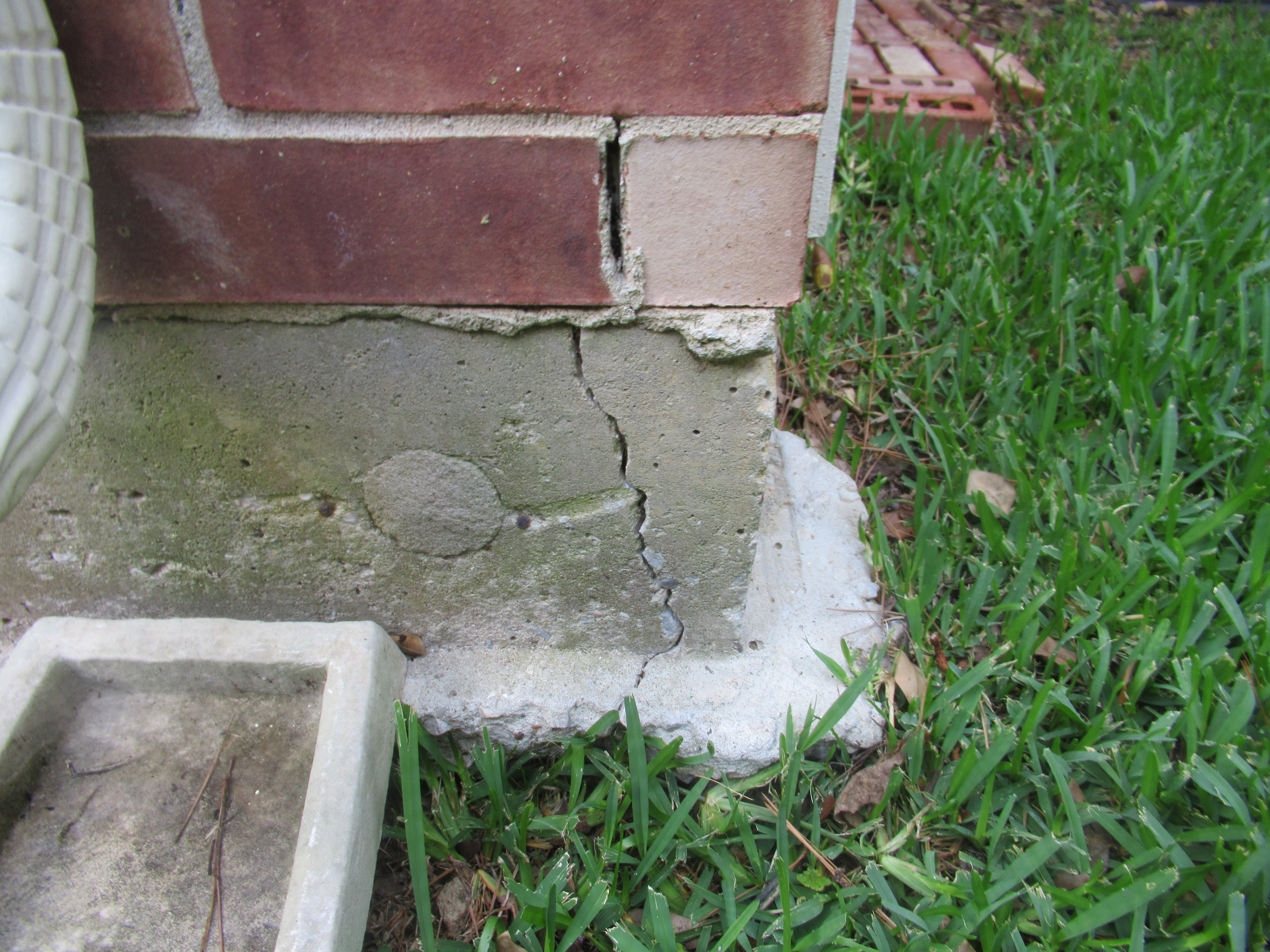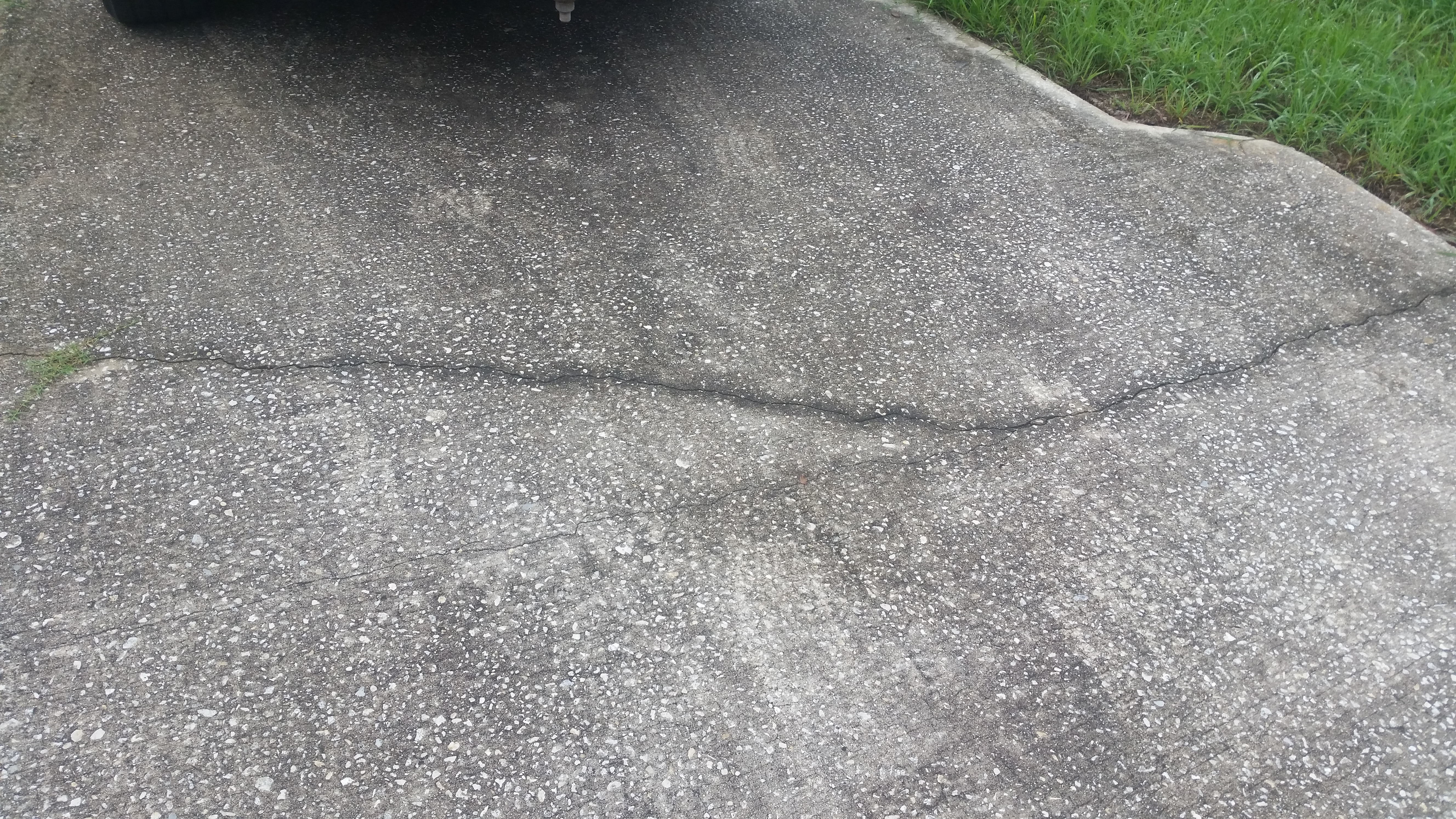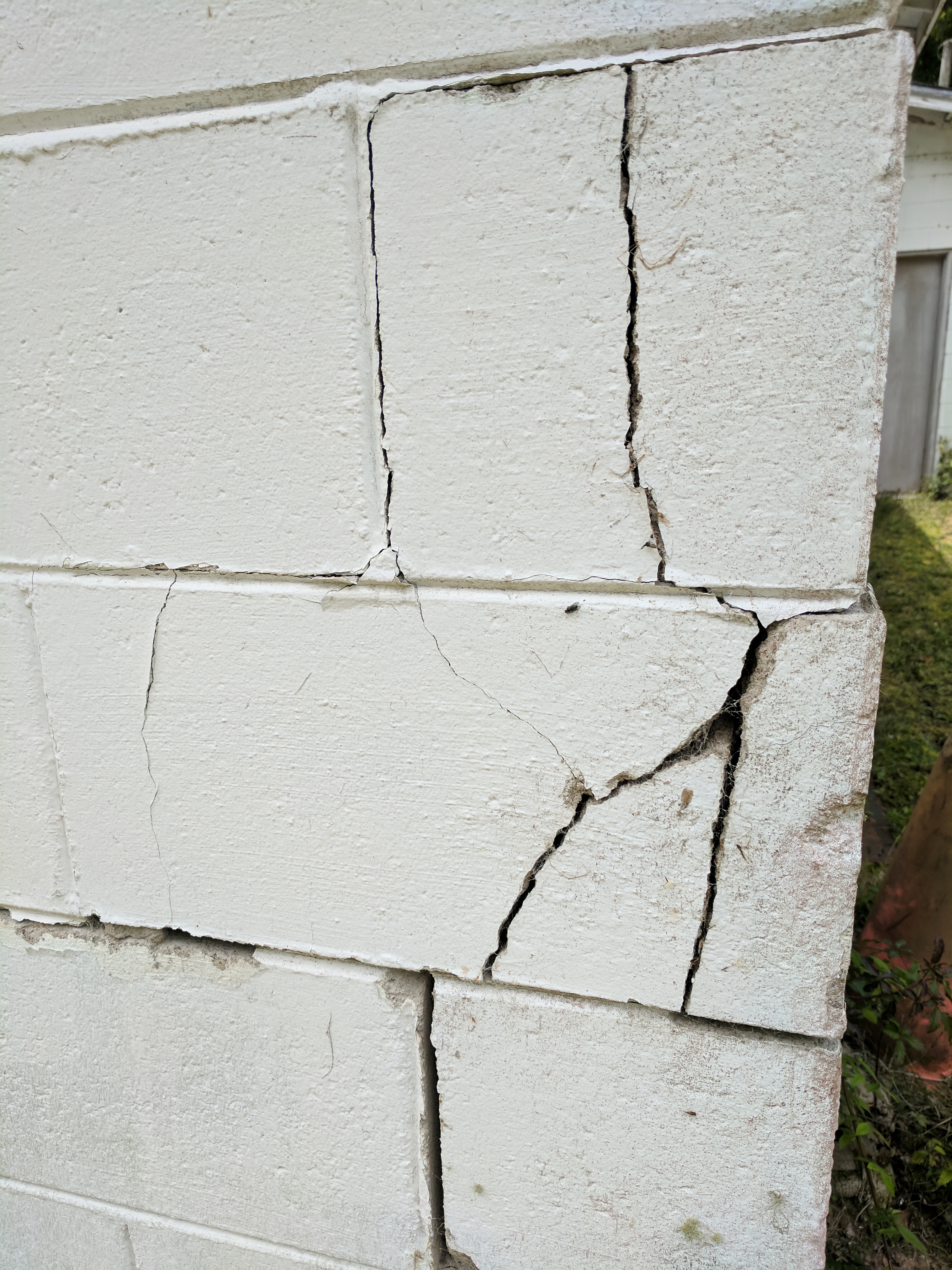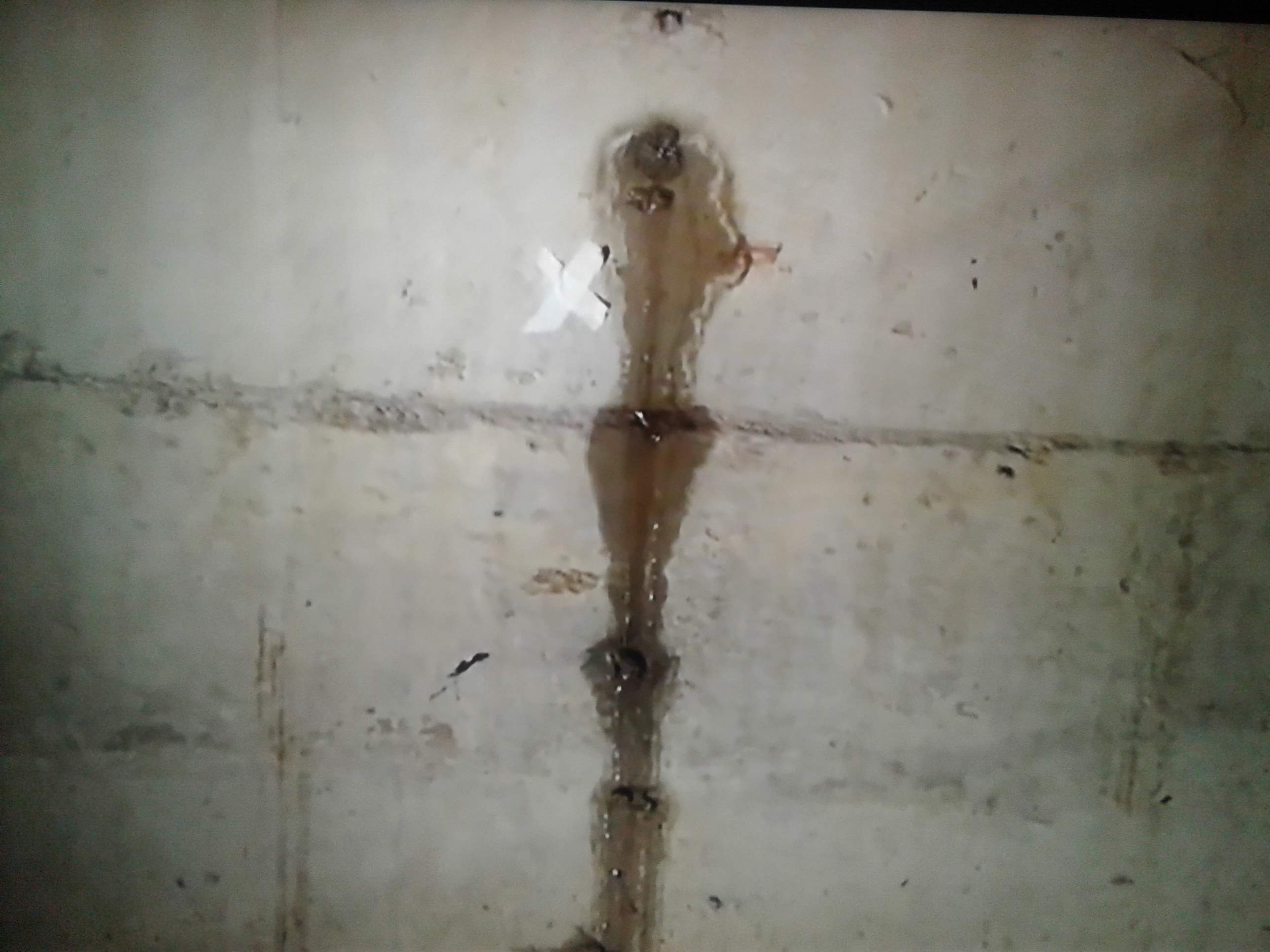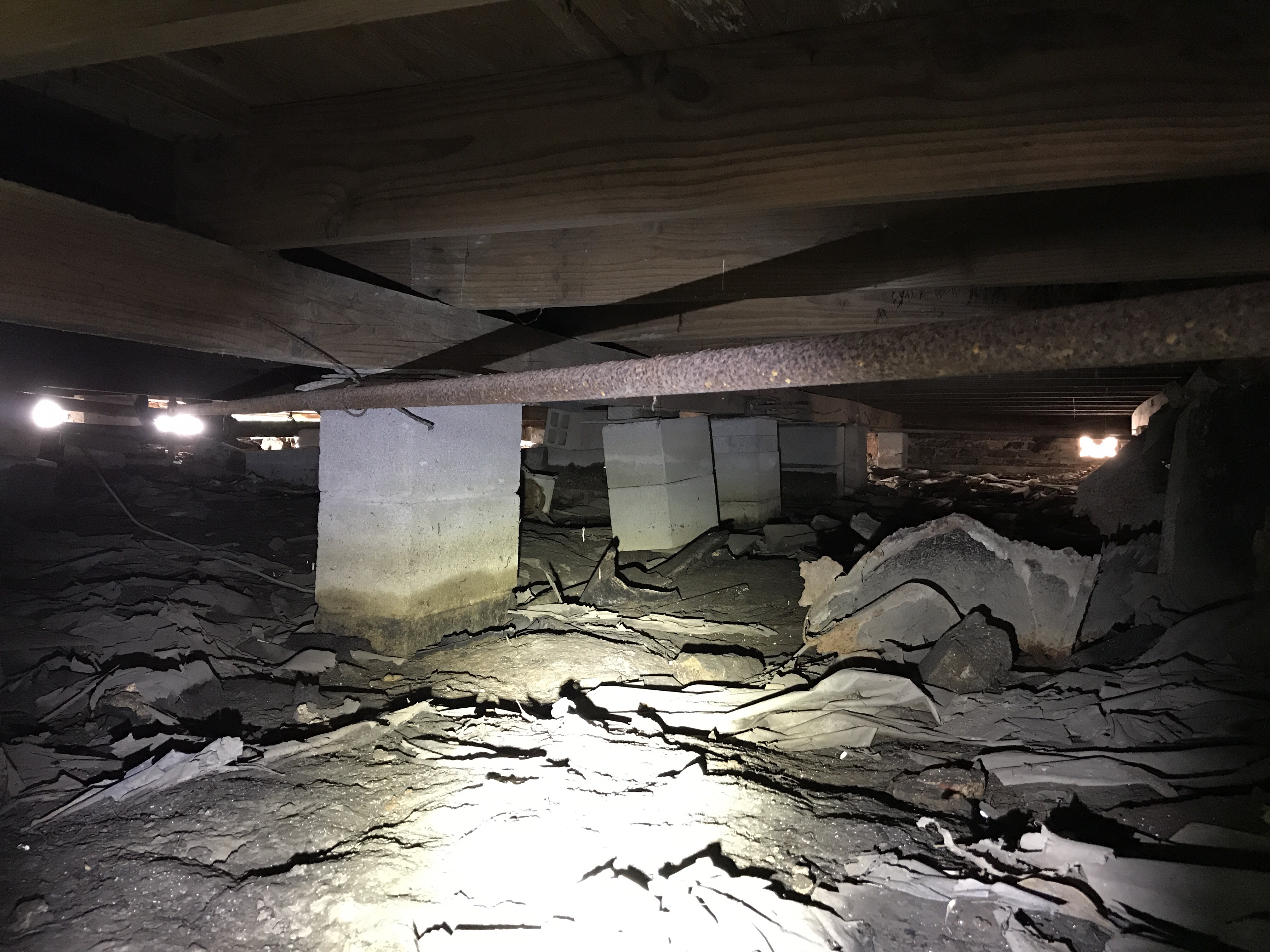According to the image “Downspout extension too short.” When a downspout is not extended far enough away from the foundation, recommended 4 to 6 feet, you can have water penetration problems in your foundation. The water will flow down into the soil and then back into the foundation.
As a inspector its is very important that close attention is giving to structure of a home. There are structural failure signs that a inspector can look for. If there are any bulging walls or leaning walls, there is structural damage present. Please refer to a licensed structural contractor for further inspection and repair.
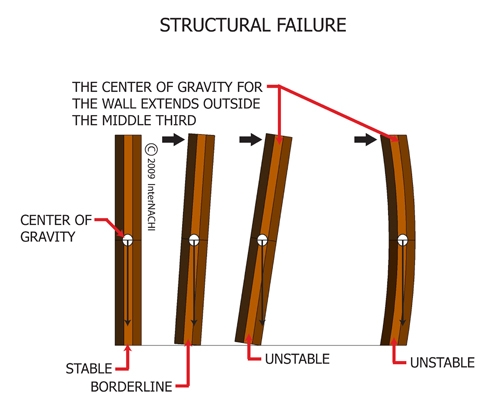
Date: Tuesday, May 29, 2018
Address: 123 Fake Street. Raleigh, NC
During the exterior portion of inspecting 123 Fake Street. Raleigh, I noticed a large masonry crack along the side of the home. The crack has been repaired in the past with a non-flexible mortar. The crack appears to be caused by settlement in the soil under the foundation. Specialized service is recommended. I did note a brick ledge was installed and appears to be intact. A specialized service in settlement and masonry can determine the proper path to alleviate the problem.
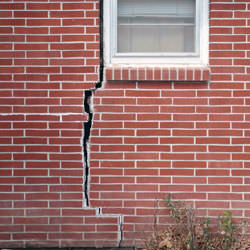
Stucco over brick is a cosmetic process to cover and changed the look of brick. The new stucco must be applied in a minimum of 2 steps. Step one is a scratch coat and step 2 a finish or a brown coat. A third step can be applied which is called a finish coat. A finish coat consist of the textured finished.
Date: Tuesday, May 29, 2018
The article I have read and researched is titled “Material Defects Defined for Home Inspectors”. The article went into detail explaining what exactly a material defect is and how not to confuse other defects while writing an inspection report. We, as inspectors, want to give a full and unbiased report but do not want to leave ourselves open to unnecessary litigation. Nor do we want to confuse the client by intermingling defects with material defects. The article does an excellent job of explaining the difference between the two even during instances where both material and nonmaterial are applicable.
"Corner pops or shears may be present at one of more exterior concrete corners of the home. In the opinion of the inspector, these pops are common in Texas construction and do not normally reduce the strength of the foundation nor do they necessarily mean that structural integrity has been compromised. Post tension cables and/or structural re-bar installed behind the shears may be subject to water exposure, rust and deterioration.
Previous foundation repairs/adjustments have been made to this home. A transferrable warranty may be available from the current owner and repair company. It may be beneficial to have the foundation company evaluate the foundation during the option period. The exterior perimeter of the concrete foundation exhibits areas where concrete has formed a honeycomb effect. This is generally caused at the pouring of the slab where concrete has not been fully packed down into the form boards. This condition is not generally cause for concern and does not necessarily mean that the foundation is subject to failure. Smoothing concrete as a patch to these areas will improve the cosmetic look of the area affected.
I read an article about shrinkage cracking in concrete. Restraint to shrinkage is the most common type of concrete cracking, whether a slab or residential foundation wall. Shrinkage cracks occur from the surface of the concrete drying out faster by its exposure to air. As water evaporates more at the surface, the particles at the surface move close together at a faster rate than the underlying concrete and a crack occurs. It is common and expected in drying concrete, and precautions can be taken to limit or control cracking, like adding control joints.
Poor footings and piers will ultimately lead to movement and inadequate structural support. The flat block at the bottom of this pier is cracked and not proper footing. The pier, comprised of a hollow core block and wood scraps, can quickly give way to lateral movement and the wood scraps will begin to deteriorate over time.
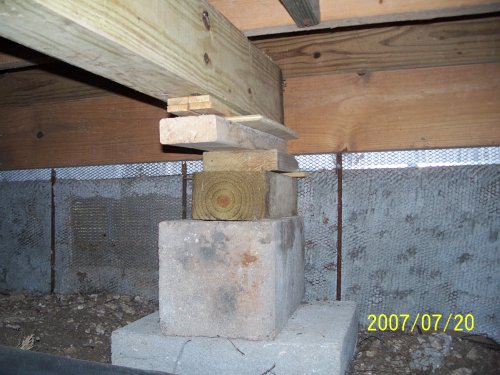
Quality vs. Defect - Poor-quality work vs. defective work can be tough to define. If something looks incorrectly built but shows no signs of failure after many many years, you need good reason to recommend correction. If its new and looks wrong, it may fail, so pass on the liability by recommending a specialist inspection.
Pictured is a shrinkage crack in the driveway. Shrinkage cracks are very common and expected in drying cement. The surface drys out faster than the underlying cement due to contact with air and the evaporation that results. This causes the surface to crack.
The linter over the window is steel and adequate for the load evidenced by no cracking in the middle or at the corners of the window. There are no cracks along the mortar lines and no cracks anywhere around the window or window sill.
The linter over the window is steel and adequate for the load evidenced by no cracking in the middle or at the corners of the window. There are no cracks along the mortar lines and no cracks anywhere around the window or window sill.
this essay is about concrete spalling. as you can see in the attached photo, the concrete is spalling on the warm side of the garage door most likely caused by snow melting, and then freezing. I would recommend that a concrete specialist be contacted to do a proper assessment.
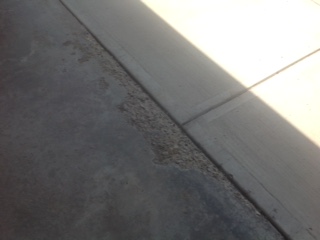
this essay is about basic waterproofing for basements. basements are typically most at risk from water damage, and moisture intrusion from being below grade and being surrounded by soil. one of the most important things in preventing water/moisture from entering the basement is proper drainage around the foundation.
As seen in this picture, the cinder block wall on this residential structure is severely damaged. This is a severe safety concern due to this being the corner of a loading bearing wall. It is highly recommended and imperative that a contractor or engineer notified to investigate and repair this wall.
The greater cost of using concrete for the foundation and walls of a structure is beneficial in the long run. Concrete increase the safety of the structure. Its ability to withstand strong winds, like a hurricane, and being fire resistance is a huge safety feature of using concrete. The durability of concrete surpasses that of wood or other materials.
This is a picture for an interior foundation wall. There i a rod from that was probably use in the construction process that was never cover or sealed causing a water leak to the inside wall. This is an indication that there is water accumulation on the other side of the foundation wall. There is also a presence of efflorescence, an indications that this has been leaking for a period of time.
When doing a foundation inspection, i will look around the foundation perimeter inside and outside. I will look on the outside for water accumulation that it can become an issue for water leak to the inside of the foundation. I will look for cracks and presence of efflorescence, for indication of previous water leaks.
The picture below shows a crawl space foundation from a home inspection that was done recently. Upon entering the house, it was immediately noted that the floors were uneven in various areas, especially the front/ living room area. This was one of the main concerns for the buyer. Inspection of the crawl space revealed the problem: there were many foundation piers that were settled and shifted out of place. Most foundation piers were not properly attached to other framing members (beams, sills, etc…). Further inspection revealed lack of proper footings and a severe moisture problem under the house. Soil grading around the house was allowing water to drain into the crawl space. Extensive repairs were called for and I recommended further inspection/ evaluation/ repairs by qualified contractors.
